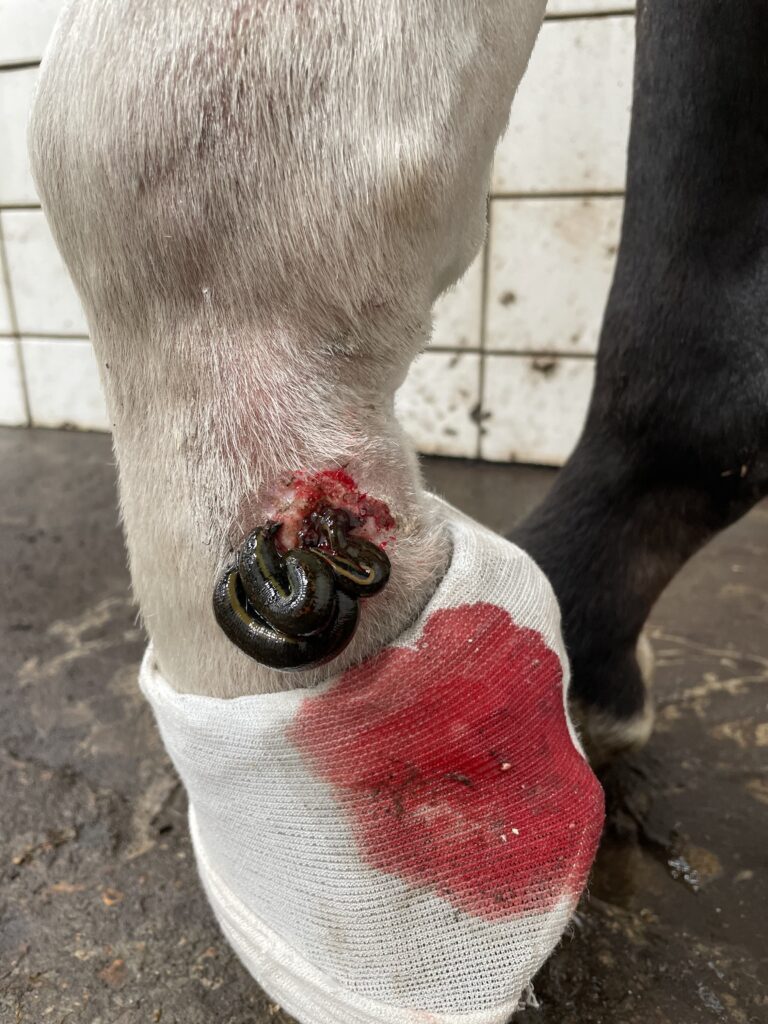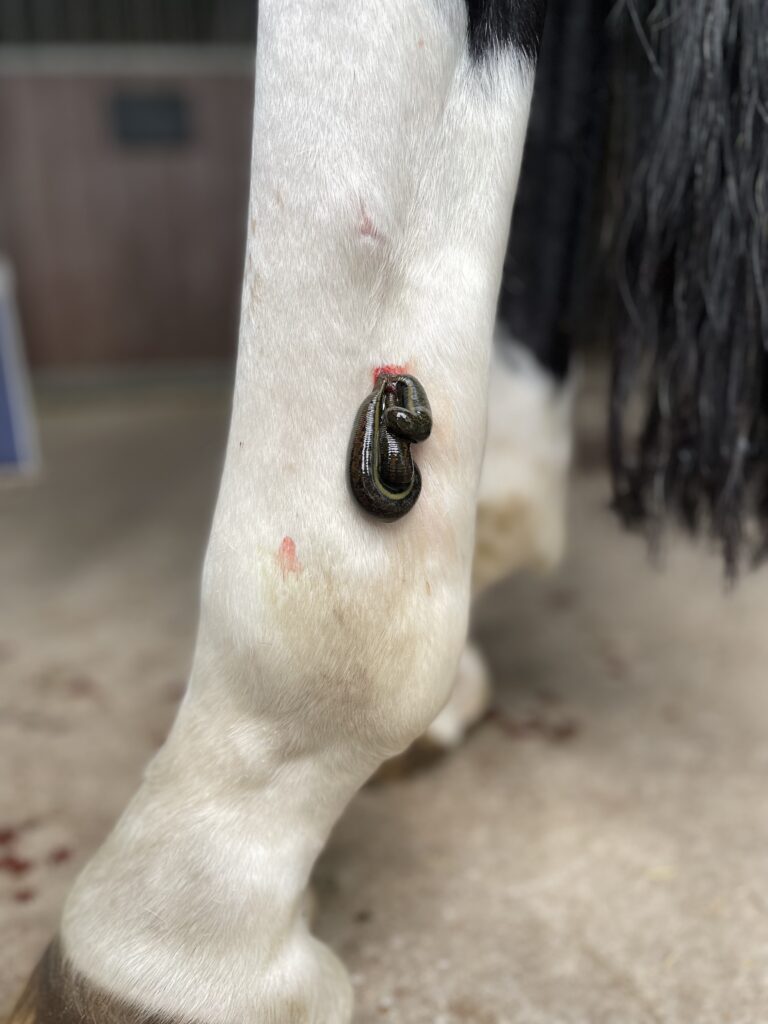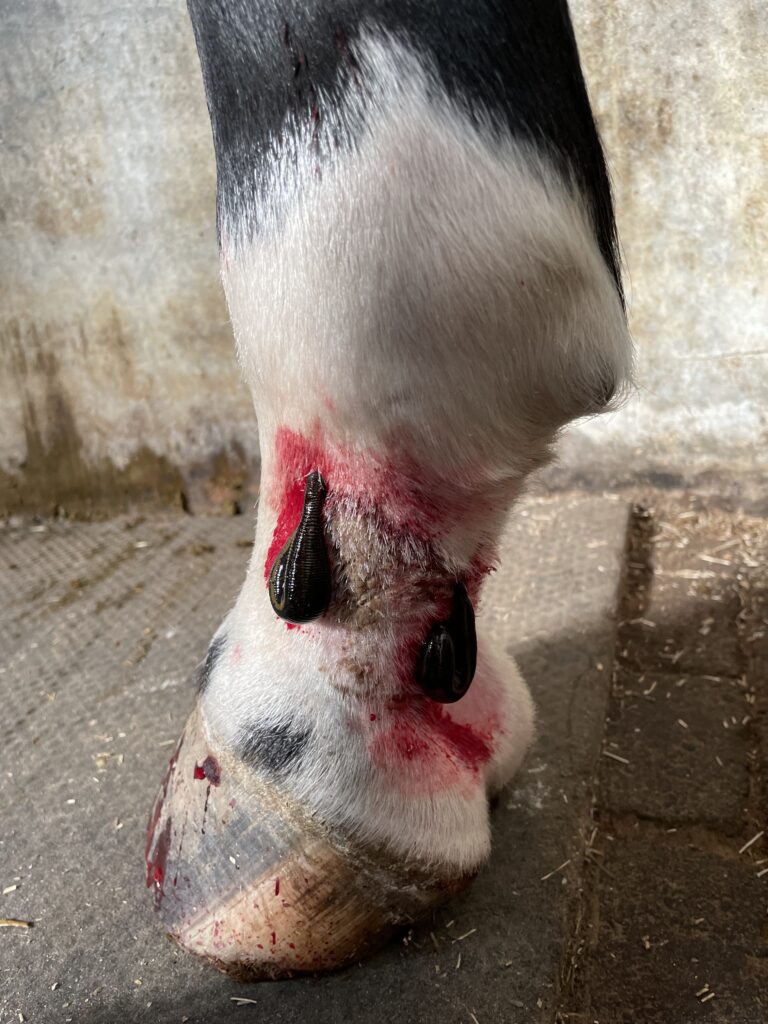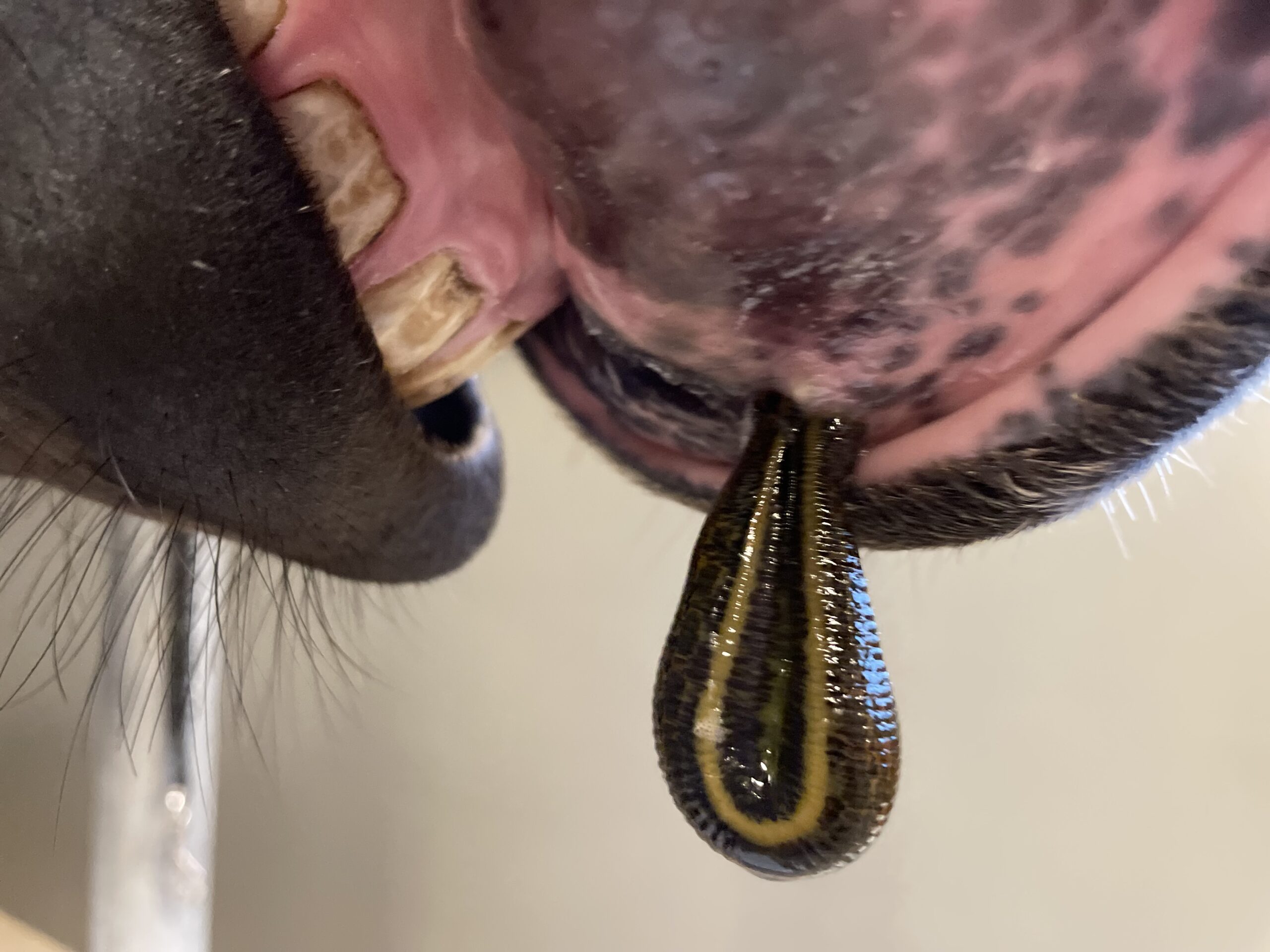More and more often, European horse people use leeches for their equines with physical problems. The little slippery critters may evoke negative reactions for many people, but the medicinal leeches can actually work wonders. Skin conditions such as mud fever and fungus reduce or disappear; osteoarthritis and stiffness decrease; and horses with laminitis can also benefit enormously from the saliva that leeches produce. Martsje Bergsma started her business as an equine massage therapist in the Netherlands in 2009 and in 2020 learned about treating horses with leeches. Now a hirudotherapist, she sees this practice as the crowning glory of alternative medicine.
Leeches are part of the earthworm family. The family name is Hirudinea. Of the approximately 700 leech species, only three are suitable for medicinal use. The medicinal strains are specially imported and grown by certified nurseries. In many European countries, leech therapy is an accepted therapy used in hospitals and clinics for humans and animals, and the leech is an official medical product.
The Medical Leech and its Cleansing and Detoxifying Effect
“The medicinal leech can be seen as a biological mini-pharmacy and also has a cleansing and detoxifying effect on the entire body,” says Martsje Bergsma. “They stimulate and activate the immune system and the self-healing capacity of the horse’s body.”
“Hirudo” is a derivative from the word hirudin; this is an anticoagulant substance in the saliva that the leeches release into the body of their host. A win-win situation arises: the medicinal leeches can feed on the blood of the horse and the horse takes advantage of the substances that the leeches release into the horse’s body through their saliva.
Conditions in which Leeches Can be Used Successfully:
- skin disturbances such as mud fever, fungus and scratches
- lymphangitis
- wounds and scars
- arthrosis
- laminitis and ulcers
- edema and wind puffs
- muscle fatigue
- tendon injuries
- hematomas and abscesses
Mud Fever and Scratches
“I have been working with medicinal leeches for three years now and the results in curing mud fever for example are amazing,” says Bergsma. “Mud fever is a common disease in horses, especially in countries where it rains a lot, like Great Britain and the Netherlands. But also in humid climates, like Florida, you see a lot of skin problems. Most grooms have developed great skills in controlling those. If we talk about mud fever, it is visible on the lower legs and mainly in the pastern area of a horse.



Leeches are used to treat an old wound, wind puffs and mud fever.
“Even if you dry the skin of the lower legs immediately after washing and you are very diligent in using a good skin cream (on a natural basis or prescribed by a veterinarian), it’s still very hard to totally get rid of the mud fever (or scratches in Florida and similar climates),” she continues. “After intensive lubrication, the spots usually disappear, but sometimes they never go away completely or they reappear during times of stress. In more severe cases, the mud fever can even develop into wet, smelly spots and often the horse’s legs are thick and retain edema. It may even become so painful that the horse goes lame.”
Expression of Waste Materials
“Mud fever spots visible on the outside of the horse’s leg are an expression of waste materials that are not properly cleaned up from the inside out by the horse’s physiological system itself,” Bergsma says. “This is often due to stress, which causes the immune system to no longer function optimally. The stress can be caused by the horse experiencing mental stress from competition and performance, but most of the time it is caused by physical stress; the body receives too much or too little of certain nutrients which causes the immune system to not function optimally anymore.”
Be Well Informed
“For you as a groom, it is good to know that this method of treatment exists and that there is a possibility to cure some ailments like mud fever properly,” Bergsma says. “The method of treatment (frequency and number of leeches used) depends on each horse and, as with all therapies, there is a chance that it sometimes doesn’t give the desired result. But, in my experience, mud fever disappears in at least 80-90% of the cases after a number of treatments.
“Make sure you are well informed and have the treatment only done by a qualified hirudotherapist, because there are some contraindications in which leeches should not be used.”
Be sure to tune in to the second part of Bergsma’s series where she explains the reasons behind the leech’s seemingly magical powers (HINT: the secret lies in the saliva), the practical elements to a hirudotherapy appointment and the FEI’s response to using leeches as a method of treatment.
While growing up doing jumping and dressage in the Netherlands, I’m now addicted to dressage as a way to keep the horse physically healthy. I love exploring ways to develop the horse as a happy athlete up to Grand Prix level.
As an equine massage therapist, I’ve learned even more about equine biomechanics. I am fascinated by the horse’s internal and external physics.
My training as a hirudotherapist opened up a whole new world of knowledge for me. It is amazing to see the often magical outcomes after treatments of diseases and disorders with medicinal leeches, and it’s a life goal of mine to educate horse people about it.
Therefore, I’m honored to write for HorseGrooms.com, a great place to gain knowledge that can improve the well-being of the horse.


